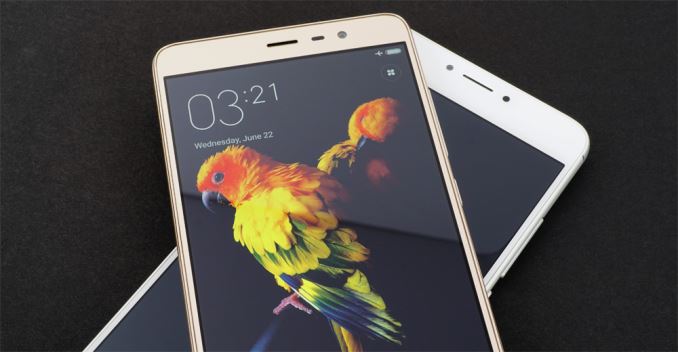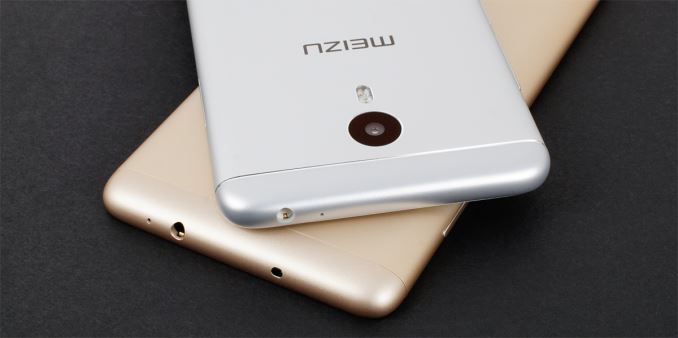The Meizu M3 Note vs. Xiaomi Redmi Note 3 Review: Comparing Notes
by Matt Humrick on July 12, 2016 8:00 AM EST- Posted in
- Smartphones
- Mobile
- Xiaomi
- Meizu
- Redmi
Final Words
I’ll admit it: I’m spoiled. I’m used to using the latest technology and playing with the recent flagship phones. I do not get many opportunities to review lower-cost devices, so I was not sure what kind of user experience to expect. After looking at the Meizu M3 note and the Xiaomi Redmi Note 3, I can say that both exceeded my initial expectations but in different ways and to different degrees.
The M3 note’s aluminum chassis is sturdy, with an attractive, symmetrical design. Additional machining details, such as the groove for the volume and power controls and the slots on the back that hide the endcap seams, are a nice touch shared with Meizu’s more expensive models. The M3 note also has a great fingerprint sensor, and Meizu’s Flyme OS includes some nice navigation features, like swiping up from the lower bezel to access recent apps instead of tapping a dedicated button.
The Redmi Note 3 and its Snapdragon 650 SoC easily outperforms other phones in its price range and approaches flagship numbers in some of our system performance tests. It cannot match the peak GPU performance of higher-tier SoCs, but its sustained performance is nearly the same once temperature forces the other GPUs to throttle frequency. Whether opening or switching apps, navigating the UI, scrolling in the browser, or working in apps, this phone feels fast. The Redmi Note 3 is a clear leader in performance per dollar.
Due in part to their larger-than-4000mAh batteries, both phones deliver excellent battery life, lasting more than 12 hours in our Wi-Fi browsing test—the longest of any phones we’ve tested—and nearly as long in PCMark. The M3 note’s battery life is generally a little better than the Redmi Note 3’s, but the latter remains close while delivering much better performance.
While there are positive elements for both phones, we need to be realistic. Neither phone delivers the same user experience or has the same feature set as more expensive flagships. In order to reach a lower price point, some compromises naturally need to be made. This becomes obvious as soon as their displays light up. Both panels are capable of reaching a respectable 450 nits max brightness and have good viewing angles, but black levels are subpar even among other phones in their class. Both panels also fail to cover the full sRGB gamut, reducing color accuracy. Their default calibrations also miss the target white point, giving the Redmi Note 3’s screen a blue tint and the M3 note’s a magenta hue. Both phones offer the ability to adjust white point, but only the Redmi Note 3 provides a setting that actually improves grayscale accuracy. Unfortunately, the Redmi Note 3’s poorly configured gamma leaves its screen looking dark with less shadow detail, which is most noticeable when watching movies or playing games.
Camera performance is another area where these two phones struggle. The Redmi Note 3 is clearly the better of the two, capable of capturing some nice looking images in good lighting. Its HDR mode is also effective, naturally brightening darker areas while maintaining color saturation and detail. As the lights dim, however, its performance drops. Like the M3 note and the other phones we tested in this price class, it produces noisy images lacking in detail. Even with good lighting, the M3 note’s images show excessive shot noise that noticeably degrades image quality. It also experiences issues with exposure and focus in certain conditions.
The M3 note is noticeably slower than the Redmi Note 3, but its performance is similar to other phones in its price range. People who primarily use their phone as a communication device—phone calls, email, messaging—or for working with lightweight apps—scheduling, note taking, web browsing—will likely find it to be fast enough. The M3 note can handle casual games, but it’s not capable of playing more demanding 3D titles.
At the beginning of this review I noted how similar the M3 note and Redmi Note 3 are on paper and wondered if this would translate into an equivalent user experience. The short answer is no. The Redmi Note 3’s superior performance and slightly better camera give it the edge. It just feels fast, much faster than its peers using octa-core A53 CPUs, which just are not going to be competitive at this price point anymore.
While the pace of innovation at the high-end naturally slows, the mid-range and low-end phones start looking more attractive. Flagship features and hardware continue to trickle down to lower price points, producing more-capable phones with better user experiences. Both the M3 note and Redmi Note 3 are evidence of this trend. Xiaomi’s introduction of the Redmi Note 3, however, goes even further, signaling a jump in capability that all new phones in its category will need to match.














79 Comments
View All Comments
TechnikalKP - Tuesday, July 12, 2016 - link
I have the smaller 5.0" Redmi 3. The excellent battery life has completely transformed my relationship with my phone. Instead of limiting usage and worrying about running low when I actually need it, the stellar battery life lets me use the phone without a thought. I typically find myself with 60-70%+ remaining on the battery after a normal day's use. For times when I'm really abusing the phone - ex international travel with 8+ hours of screen time - I still haven't run it all the way down.The device is still thin. I can't imagine going back to a 'better' phone that doesn't support similar battery life.
WorldWithoutMadness - Tuesday, July 12, 2016 - link
They can't because slim is the new sexy these days. Although they are pretty much balanced but they are designed toward styling rather than functionality (all day battery, etc)Arnulf - Wednesday, July 13, 2016 - link
I don't care about "slim and sexy" in a telephone. I actually had to purchase a silicone sleeve for my Nexus 5 just to make it thick enough to not slip from my grip all the time ...LG could have easily used a thicker battery in there.
jayfang - Thursday, July 14, 2016 - link
True. it's Form over Function.But sadly it sells stuff to the image obsessed masses. In particular those "beautiful" bendy iPhones hidden away in protective cases is a bit a laugh.
Amandtec - Tuesday, July 12, 2016 - link
I have the Note 2 which is similar except in plastic back. Also loving it more than any prior generation iphones and samsungs I owned - apples vs. pears, I guess but I am a believer from a user experience point of view.Xinn3r - Tuesday, July 12, 2016 - link
I realize you mentioned the Mi5 Pro in your review.Does that mean we're getting a review soon?
Eri Hyva - Tuesday, July 12, 2016 - link
I am waiting for the special Taiwanese version of Redmi Note 3 to appear in AliExpress: it has more 4G frequencies, including that important B20 (800MHz):FDD-LTE: B1 / B2 / B3 / B4 / B5 / B7 / B8 / B20 / B28
TD-LTE: B40
source:
http://mobile.mi.com/tw/note3/#specs
Pissedoffyouth - Tuesday, July 12, 2016 - link
Band28 for NZ/AU as wellEri Hyva - Tuesday, July 12, 2016 - link
and B2 1900 PCS and B4 1700 AWS for Americasagambhandari - Tuesday, July 12, 2016 - link
I would like to suggest you to also check the 4K quality in case of the Redmi Note 3. While the official camera app doesn't do 4K. You can install any other 3rd party camera app (OpenCamera or Google Camera v2.7.x) and those can use it for 4k.The SD650 supports 4K.